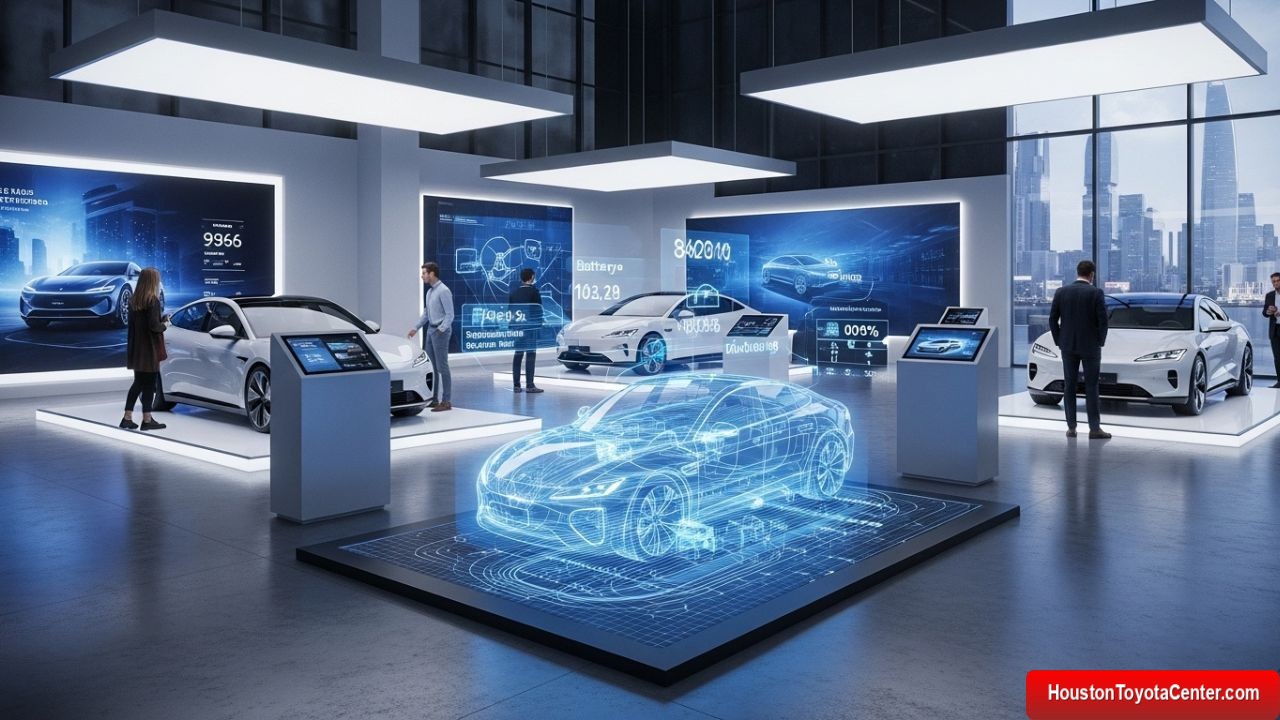For over a century, the traditional dealership model has been the backbone of the automotive industry. Car buyers visit a dealership, negotiate with sales representatives, and drive home with their new vehicle — usually after signing a stack of paperwork. But in the last decade, something revolutionary has been happening. Automakers are increasingly exploring direct-to-consumer (DTC) sales, a model that eliminates intermediaries and allows customers to buy vehicles directly from the manufacturer.
This shift raises one pressing question: are car dealerships on the brink of extinction?
Let’s explore how this change began, the forces driving it, the potential winners and losers, and what the future might look like for consumers, automakers, and dealerships alike.
1. The Rise of Direct-to-Consumer Car Sales
For decades, laws in the United States have prevented automakers from selling directly to customers. These laws were originally designed to protect small local dealers from powerful manufacturers that might otherwise dominate the market and undercut them.
FREE: Quickly identify and understand problems with your vehicle 🚘
CLICK HEREHowever, the rise of electric vehicles (EVs) has disrupted this arrangement. Tesla led the charge by establishing company-owned stores and online platforms that let consumers order vehicles directly — bypassing traditional dealerships altogether.
When Tesla first did this, many critics claimed it would fail due to existing laws and customer habits. Yet today, Tesla stands as one of the most valuable automakers in the world, with a DTC model at the core of its success.
Now, companies like Rivian, Lucid Motors, and Polestar are following suit, while legacy automakers such as Ford, GM, and Volkswagen are experimenting with hybrid models that blend direct sales with dealer support.
2. Why Automakers Are Turning to DTC
Direct-to-consumer sales appeal to automakers for several strategic and financial reasons. Below are the key motivations behind this shift:
| Reason | Explanation |
|---|---|
| Higher Profit Margins | By cutting out the middleman, automakers can retain the dealership’s share of the profit. |
| Brand Control | DTC allows manufacturers to fully control pricing, marketing, and customer experience. |
| Customer Data Access | Automakers can directly collect valuable data on customer preferences and usage patterns. |
| Faster Innovation | DTC enables faster feedback loops between consumers and manufacturers, speeding up innovation. |
| Simplified Buying Experience | Customers can purchase vehicles online without haggling, hidden fees, or dealer markups. |
In a world where digital convenience and transparency are increasingly valued, these advantages are hard to ignore.
3. The Consumer’s Perspective: A Simpler Experience
For consumers, buying a car has historically been one of the most stressful purchasing experiences — often involving hours of negotiation, financing confusion, and pressure from salespeople.
Direct-to-consumer sales promise a simpler, more transparent process. Buyers can configure their car online, see exactly what it costs, and complete their purchase in a few clicks.
Tesla’s website is a prime example. Customers can order a Model 3 in minutes, choosing features, colors, and payment options with no middleman. Delivery is then arranged directly from Tesla’s logistics network.
This model offers several clear benefits for consumers:
- No Haggling: Fixed prices mean no stressful negotiations.
- Transparency: The total cost is visible upfront.
- Convenience: The entire process can happen from a smartphone or laptop.
- Customization: Buyers can configure their ideal vehicle without dealer limitations.
- Speed: Delivery can be faster since there’s no need to coordinate with multiple parties.
Still, some buyers prefer the personalized touch of a dealer, especially for test drives, trade-ins, or financing advice. This divide in preference may determine how quickly DTC can dominate the market.
4. The Dealership Dilemma: Adapt or Die
Traditional dealerships aren’t standing still. Facing disruption, they’re fighting to prove their value in a world moving toward online retail.
Dealership associations in the U.S. have lobbied heavily to maintain franchise laws, arguing that dealerships are essential for fair competition, local economic support, and consumer protection.
Their arguments often include:
- Local Service Support: Dealerships offer in-person maintenance and repair facilities.
- Competition Keeps Prices Honest: Multiple dealers mean more price options for consumers.
- Regulatory Compliance: Dealers ensure vehicles meet local registration and inspection standards.
- Job Creation: Dealerships provide thousands of local jobs.
However, not all dealerships are defensive. Many are embracing technology and redefining themselves as service hubs rather than pure sales points. Some are even partnering with automakers on hybrid models where online sales lead customers to local dealers for pickup, test drives, or support.
5. Legal and Regulatory Challenges
Direct sales face a major barrier in the United States: state franchise laws. These laws vary widely from state to state, often banning or severely limiting manufacturers from selling directly to consumers.
For example:
- Texas has strict franchise laws preventing direct sales, meaning Tesla can’t sell cars there directly — customers must purchase online and take delivery out of state.
- Colorado recently loosened its laws, allowing certain EV makers to sell directly.
- New York permits Tesla to operate a limited number of direct-sale stores, but not expand freely.
This patchwork of regulations creates a fragmented market that complicates expansion plans for automakers seeking a nationwide DTC strategy.
Example Table: States with Different DTC Rules
| State | DTC Sales Allowed? | Example Manufacturer Impacted |
|---|---|---|
| California | ✅ Yes | Tesla, Rivian, Lucid |
| Texas | ❌ No | Tesla (must deliver from outside the state) |
| New York | ⚠️ Limited | Tesla (restricted store count) |
| Florida | ✅ Yes | Lucid Motors |
| Michigan | ⚠️ Conditional | Ford & Tesla (special agreements) |
The future of these laws will heavily influence whether dealerships remain central or become optional in the car-buying process.
6. The Economics Behind the Shift
From an economic standpoint, DTC sales could significantly reduce costs for manufacturers and increase price consistency for consumers.
Currently, the dealership model inflates costs due to:
- Franchise fees and markups.
- Dealer advertising budgets.
- Inventory storage and maintenance.
A DTC system minimizes these overheads. Automakers can sell cars built to order, reducing waste and aligning production with demand.
Furthermore, DTC allows manufacturers to maintain consistent pricing nationwide, preventing scenarios where the same car costs thousands more in one region than another.
However, the cost savings don’t automatically mean lower prices for consumers — automakers might choose to maintain prices and capture higher margins instead.
7. The Role of Technology
Technology is the backbone of the DTC revolution. From virtual showrooms to AI-driven customer support, automakers are leveraging digital tools to replace or enhance the dealership experience.
Key innovations include:
- Augmented Reality (AR) Car Previews: Customers can “see” vehicles in their driveway before buying.
- AI Chatbots: Provide instant answers about features, financing, or availability.
- Online Trade-In Tools: Streamline the trade-in and valuation process.
- Remote Test Drives: Some companies deliver vehicles to customers for at-home test drives.
- Mobile Apps for Ownership: Direct communication between manufacturer and owner post-purchase.
This digital ecosystem makes the transition to DTC not just possible, but desirable for a new generation of tech-savvy buyers.
8. How Dealerships Might Survive
Despite the DTC wave, dealerships are unlikely to vanish entirely. Instead, they may evolve into multi-functional service centers that emphasize value beyond sales.
Possible survival strategies include:
- Becoming Delivery & Service Hubs: Handling deliveries, maintenance, and recalls for DTC brands.
- Specializing in Used Cars: A market less affected by DTC disruption.
- Partnering with Manufacturers: Acting as official service providers or brand experience centers.
- Offering Subscription Services: Managing vehicle subscriptions or rentals.
- Enhancing the Experience: Providing immersive in-person experiences that digital models can’t replicate.
In essence, dealerships might become experience curators rather than transaction centers.
9. Consumer Trust and Transparency
Trust plays a huge role in the car-buying process. For decades, dealerships have had mixed reputations — some excel in customer service, while others face criticism for hidden fees and pressure tactics.
DTC models emphasize trust through transparency:
- All prices are fixed and public.
- The entire purchase process is documented online.
- Customers can read real reviews and see verified data before committing.
This trust-centric model appeals especially to younger buyers, who prioritize authenticity and online convenience over traditional handshakes.
10. Global Trends: Beyond the U.S.
Outside the U.S., direct sales are gaining traction more rapidly. In Europe, automakers like Mercedes-Benz and Volvo have introduced agency models, where dealers act as delivery agents rather than independent sellers.
In China, EV startups such as NIO and XPeng have fully embraced DTC showrooms in urban centers, creating luxurious brand spaces where customers experience the brand rather than haggle over prices.
This global adoption suggests that the dealership model may not vanish overnight, but it will evolve into something fundamentally different.
11. What It Means for the Future
The future likely lies in a hybrid approach, where automakers combine the best of both worlds — online convenience and local service.
Imagine:
- You browse and customize your vehicle online.
- You finalize your purchase digitally.
- You pick up or service your car at a local certified hub.
This system could preserve jobs, maintain customer trust, and still provide the efficiency benefits of DTC sales.
As with many industries — from retail to banking — digital transformation doesn’t erase intermediaries; it redefines them.
12. Final Thoughts: Will Dealerships Disappear?
The short answer: not entirely, but their role will never be the same.
Dealerships that resist change risk becoming obsolete, while those that embrace innovation may thrive as new pillars of a reimagined automotive ecosystem.
For consumers, DTC promises greater control, clarity, and convenience — a vision that aligns perfectly with the modern demand for digital empowerment.
In the end, dealerships won’t die — they’ll evolve.
And the winners will be those who understand that selling cars in the 21st century is not just about transactions, but about experiences, trust, and technology.
✅ Key Takeaways
| Topic | Traditional Model | Direct-to-Consumer Model |
|---|---|---|
| Buying Process | In-person negotiation | Online purchase |
| Pricing | Varies by dealer | Fixed nationwide |
| Profit Distribution | Shared with dealers | Retained by manufacturer |
| Customer Experience | Depends on dealership | Controlled by automaker |
| After-Sales Service | Dealer responsibility | Manufacturer-led or hybrid |
| Future Outlook | Transformation likely | Rapid growth expected |
Conclusion
The automotive industry stands at a crossroads. With digital technology, shifting consumer expectations, and innovative EV startups leading the way, the traditional dealership model faces its biggest disruption yet.
Will dealerships vanish completely? Probably not. But the showroom of the future won’t be a place of negotiation — it will be an experience center, a service hub, or a brand studio.
Just as e-commerce didn’t end retail but reinvented it, direct-to-consumer sales will redefine how we buy cars forever.


Leave a Reply